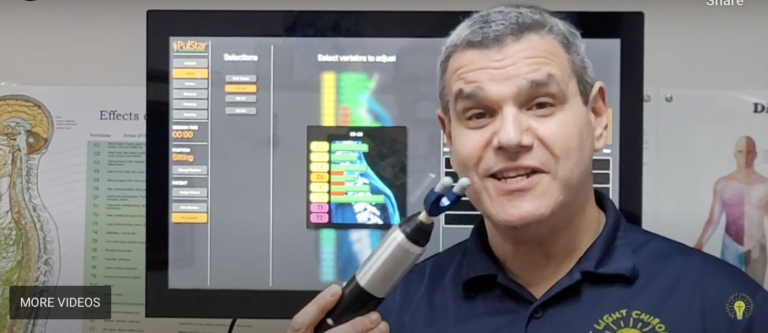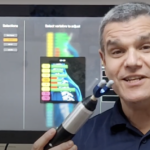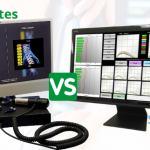Chiropractic adjusting instruments are quickly becoming one of the fastest-growing forms of chiropractic manipulation today.
With these instruments’ ability to offer speed, precision, and efficiency, it’s no wonder that so many chiropractors are turning to them. In fact, a recent Chiropractic Economics Survey states that 58.3% of doctors of chiropractic are offering instrument adjusting in 2021.
But why exactly are so many DCs switching over or adding these tools to their practice—and further, how could switching help you extend your career and provide your patients with a more comfortable, accurate experience that ensures they’ll continue coming back to you for analysis and treatment?
We’re here to provide you with the answers to these important questions—keep reading to learn more and discover the five reasons so many chiropractors like you are joining the instrument-adjustment side of chiropractic.
What Exactly are Chiropractic Adjusting Instruments?
So, first things first, what exactly are these instruments and what do they do—and, to take it a step further, what does the term “instrument adjusting” really mean in the first place?
Let’s start with the basics. Chiropractic instrument adjusting is similar to manual adjusting, except it relies on specific, specialized tools to perform an instrument-assisted adjustment. Though you, as a doctor of chiropractic, have the skill, knowledge, and talent to facilitate an adjustment and make an informed diagnosis to deliver the precise treatment a patient needs through a manual adjustment, often a precise, gentle, and technologically assisted tool can achieve a much more pointed, desired result in a localized area.
So, with this foundational knowledge in mind, it’s easy to define a chiropractic adjustment instrument as a tool that enables you to provide pain-free analysis and treatment with gentle—but precise—force for spinal adjustments, including in the neck, back, and extremities. While there are a few different types of adjusting instruments out there, most of them rely on spring-loaded, low force-impulses delivered to targeted, localized areas.
These tools—sometimes called activator instruments—enable you to perform spinal adjustments, diagnose issues, analyze pain points, check for signs and symptoms of troublesome areas, and more.
The Top 5 Reasons Doctors of Chiropractic are Opting for Instruments
It’s important to make a clear distinction before we go any further—chiropractic adjusting instruments are not—and never were—intended to replace the manual adjustment you’ve been highly trained to do. And they certainly weren’t created to diminish your necessity.
In other words, instruments are meant to be used as complementary tools to provide a well-rounded, skilled Doctor of Chiropractic with an array of options. They are never a total substitution for your hands.
With this in mind, many chiropractors have opted to mindfully curate instruments to their chiropractic tool kit in order to provide finely tuned, more precise results for their patients. Of course, that’s not the only driving factor behind this gradual but steady shift toward including instruments. Keep reading to learn the top five reasons more chiropractors have opted to add chiropractic adjustment instruments to their repertoire.
More Accurate Chiropractic Treatments
While there are a multitude of manual, activator adjustment, and computer assisted, electronic impulse adjusting out there (and it’s impossible to speak to the quality of every last one) chiropractic instruments are meant to be both gentle and precise when it comes to force.
Because each tool is a dedicated chiropractic instrument engineered to use force and speed at specific measurements, adjusting instruments can target a specific area more pointedly than most manual adjustments. Though we can’t speak for every instrument out there, some (like the PulStar instrument) come with adjustable modes for various purposes backed by computer precision that enable premium impulse therapy as a complement to a chiropractor’s healing hands.
Future Proof Your Practice
An adjustment instrument might never replace the skilled hands of a doctor of chiropractic—but in some ways, chiropractic instruments can do what DCs cannot. Most specifically, chiropractic instruments can provide the benefits of high-speed technology that simply cannot be replicated by a person.
Most chiropractic adjusting tools and instruments are engineered to mimic the manual adjustment of the chiropractor—but provides this adjustment much, much faster. In fact, the speed of a chiropractic activator (and even more so with the PulStar) should provide more stabilization for joints, because activator instruments can treat joints without causing surrounding muscles to tense. The result? An effective, efficient, and precise method of delivering force to a specific area of a patient’s body and the potential to work at much higher frequencies, which is crucial for work with soft tissue and extremities.
Happier Patients
Because activator instruments and impulse therapy instruments rely on technology and specific units of force, the treatment can be more precise than traditional chiropractic. Activator instruments and impulse therapy instruments also allow chiropractors to treat patients—especially demographics that might have a more difficult time with manual adjustments, such as the ill, small children, or the elderly—very gently, yet effectively.
Additional Data Points and Analysis
Chiropractic and activator adjustment tools don’t just provide doctors of chiropractic with the ability to deliver precise, gentle treatment—they also allow chiropractors the ability to analyze and evaluate their patients in more efficient ways.
Some instrument adjusters allow doctors of chiropractic to do a thorough analysis of a patient’s spine through light, but forceful, touches—then, some of these tools (like the PulStar) take this data collected from the movement of the spine and display it in an informative graph in real time for chiropractors to evaluate. These visual graphs can help the doctor of chiropractic demonstrate the treatment on the patient, and even save the treatment record for future visits.
This process is fast, saving a doctor of chiropractic a lot of time during the analysis process, but it’s also efficient. Because this process tends to fast-forward the discovery phase of a session, a chiropractor has more time to focus on providing the necessary treatment—whether that’s through manual adjustment, activator adjustment, impulse therapy adjustment, or a blend.
Extend Your Chiropractic Career
Manually adjusting patients, though effective, can be tiresome and inefficient, depending on caseloads. Those who treat all their patients with traditional, manual methods are more likely to tire throughout the day. Instrument adjustments—with the right tools, of course—can replace the physical effort and demand of manual manipulation.
The results? A way for chiropractors to save their hands and their stamina for other parts of their practice that demand more finely tuned sensory feedback, and helping chiropractors like you avoid strains, pains, and work-related injuries.
PulStar Musculoskeletal Innovations: The Precision Partner Your Practice Needs
Are you ready to invest in a chiropractic instrument that can take your chiropractic skills and practice to the next level? At PulStar, we’re proud to provide doctors of chiropractic with the complementary tools they need to give their patients the services they deserve.
Take a look at our gentle and precise analysis and treatment options here or get a free demo to see how PulStar can change the way you educate and treat your patients.








